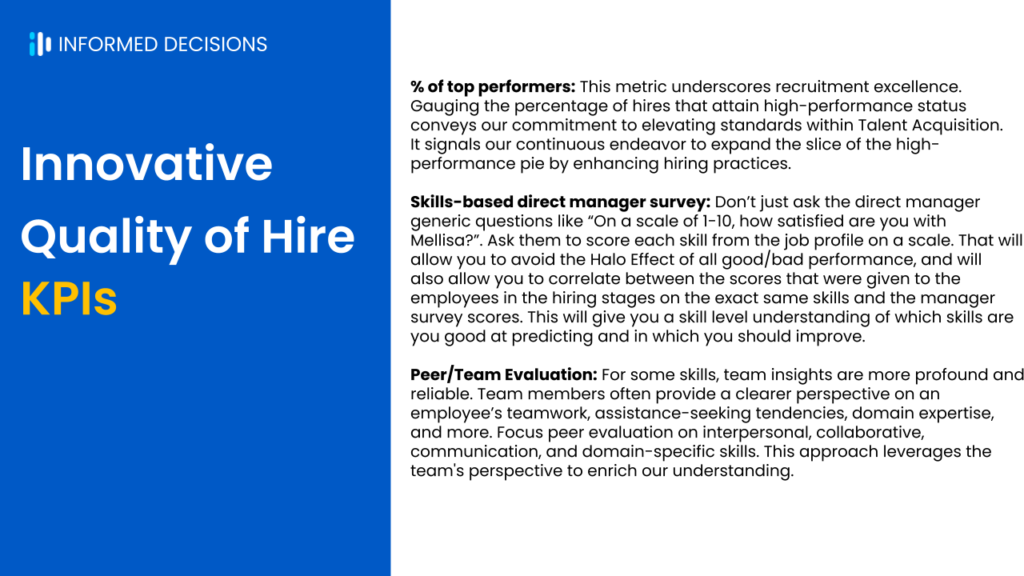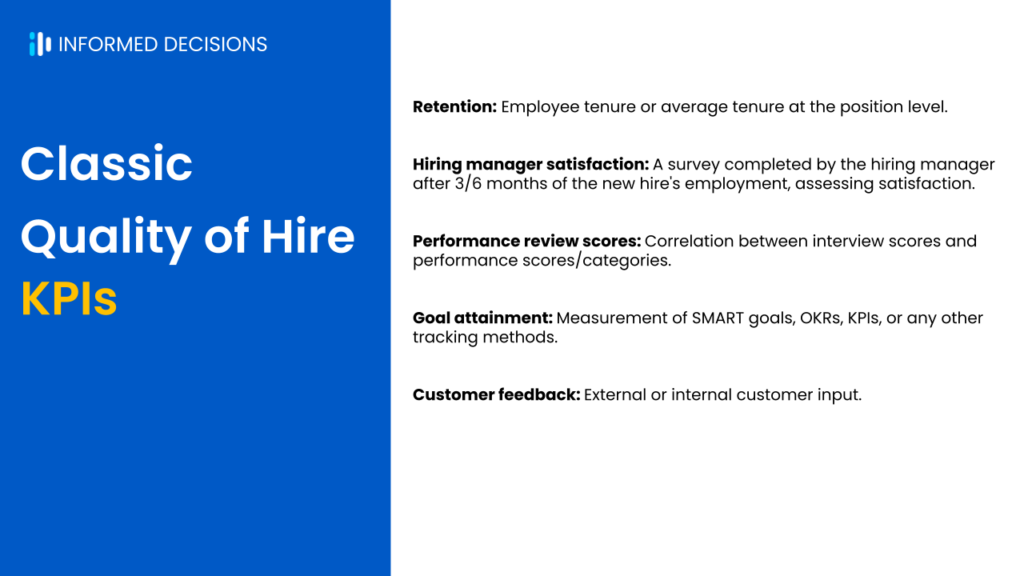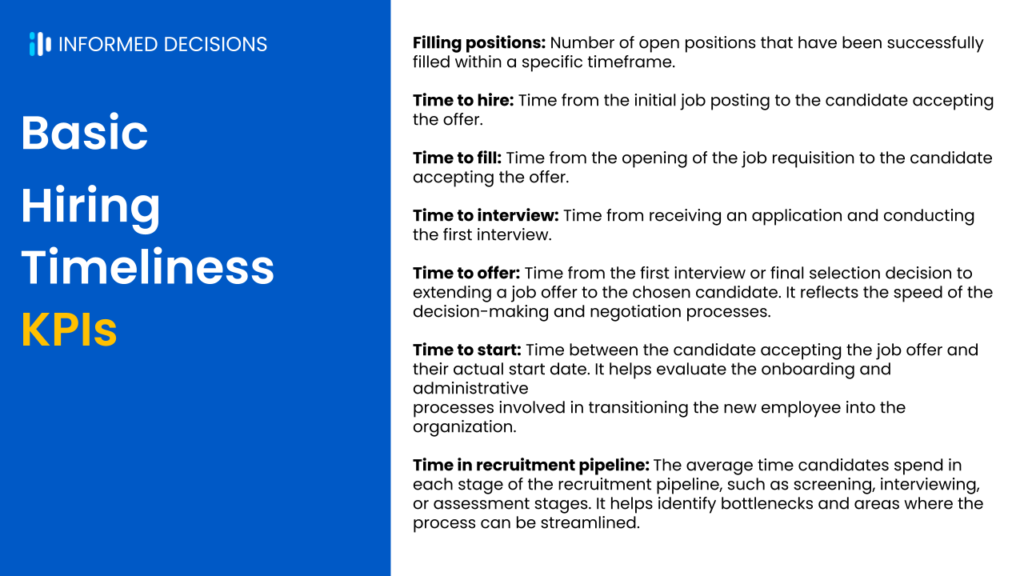Innovative quality of hire KPIs

#qualityofhire #informedecisions

#qualityofhire #informedecisions
Subjectivity
Quality of hire surveys and performance evaluations rely heavily on subjective
viewpoints, often limited to the hiring manager's perspective, lacking a
standardized benchmark.
"Ceiling Effect"
Managerial ratings tend to skew positive, making differentiation between
employees' performance levels challenging due to reluctance to provide critical
feedback.
Misalignment
The disparity between hiring and performance evaluation criteria, language, and
measures complicate linking the two processes and truly understanding an
employee's skills and quality of hire.
In light of these limitations, collaborating with hiring managers to align language
and metrics between hiring and performance evaluation can enhance the
precision of quality-of-hire assessments. Providing clear scoring rubrics to
managers further enhances measurement accuracy.
Learn about innovative quality of hire KPIs and additional ways to differentiate yourself as a TA leader: https://informedecisions.io/ebooks-and-guides/achieve-talent-acquisition-greatness/
#qualityofhire #informedecisions

Learn about innovative quality of hire KPIs and additional ways to differentiate yourself as a TA leader: https://informedecisions.io/ebooks-and-guides/achieve-talent-acquisition-greatness/
#recruitment #qualityofhire #informedecisions
Forward-thinking companies recognize the limitations of measuring only the temporal aspects of the hiring process and are adopting measures of hiring quality.
This quality encompasses an employee's effectiveness and long-term impact on an organization's success.
To gauge this, companies use tools like post hire surveys, performance assessments, and input from managers and colleagues. Retention rates also factor into assessing hiring quality.
Notable companies such as Microsoft and LinkedIn employ post-hire surveys to gather comprehensive feedback on employees' skills, cultural fit, and performance.
While these measures offer initial insights into hiring quality, they exhibit drawbacks:
Subjectivity
Quality of hire surveys and performance evaluations rely heavily on subjective viewpoints, often limited to the hiring manager's perspective, lacking a standardized benchmark.
"Ceiling Effect"
Managerial ratings tend to skew positive, making differentiation between employees' performance levels challenging due to reluctance to provide critical feedback.
Misalignment
The disparity between hiring and performance evaluation criteria, language, and measures complicates linking the two processes and truly understanding an employee's skills and quality of hire.
In light of these limitations, collaborating with hiring managers to align language and metrics between hiring and performance evaluation can enhance the precision of quality-of-hire assessments.
Providing clear scoring rubrics to managers further enhances measurement accuracy.
Learn about innovative quality of hire KPIs and additional ways to differentiate yourself as a TA leader: https://informedecisions.io/ebooks-and-guides/achieve-talent-acquisition-greatness/
#recruitment #qualityofhire #informedecisions

#recruitment #qualityofhire #informedecisions
When it comes to the most basic measures in recruitment, two common indicators
are filling positions and time to hire.
When considering both filling positions and time to hire as recruitment KPIs, it is
important to recognize their limitations. Focusing solely on these basic measures
can lead to a narrow understanding of recruitment success. They do not capture
crucial factors such as candidate quality, fit with organizational culture, diversity
and inclusion efforts, employee retention, and the alignment between hired
candidates' skills and organizational needs.
By solely focusing on filling positions and time to hire, organizations miss
opportunities to assess the long-term impact of their recruitment strategies, the
quality of talent acquired, and the ability to create a diverse and inclusive
workforce. Therefore, to gain a more comprehensive understanding of recruitment
effectiveness, organizations should consider incorporating additional KPIs that
provide insights into these critical areas.
Learn about insightful ways to measure your quality of hire here:
#recruitment #qualityofhire #informedecisions